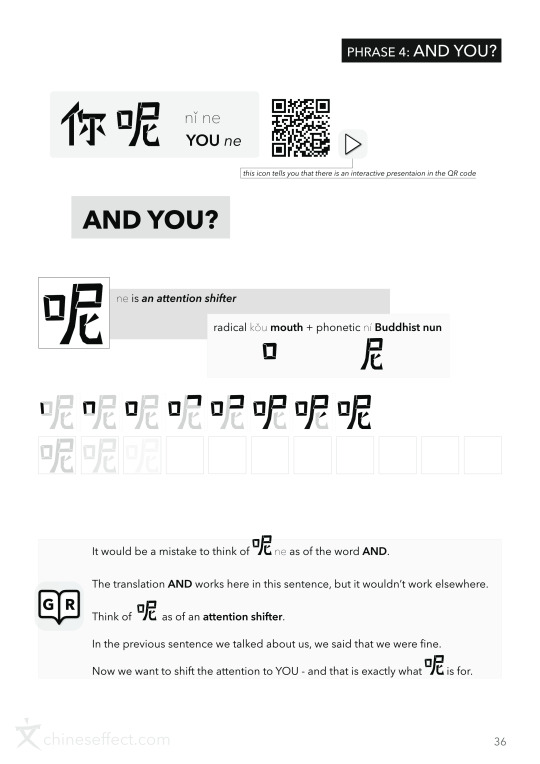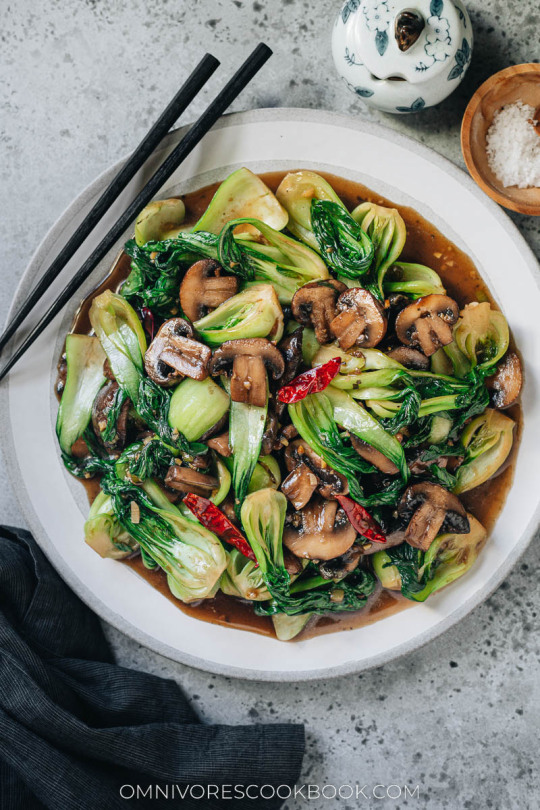#beginners chinese
Text
Speak DECENT CHINESE in 4 months - 8 easy tips
______
1. Have someone to guide you to get good pronunciation habits. It is almost impossible to re-learn bad habits later so make sure you get your pronunciation right from the beginning. I mean the pronunciation of the sounds, not the tones. Tones take more time to get used to and you can't rush it - but try the best you can. Some tutors don't bother too much about the pronunciation so make sure you find someone who is strict about that, you will be grateful later. Also get confident in pinyin, you will need it.
2. Understand the composition of the sentences. The word order is super easy and it stays the same all the time (the question and informative sentences have the same word order). I have a formula for the word order but I won't reveal it here, it is one of the secrets I keep for my students and people who use my materials.
3. Understand that there are no tenses in the sense we think about them in English and other languages. Learn to express future, potential future, finished action, change of state, experience in the past and circumstances of the event. See the difference between action verbs and verbs of state.
4. Learn to use modal verbs and conjuctions.
5. Build usable vocabulary based on the fact that everything in Chinese is interconnected.
6. Understand 就, 才,的 and 得
7. Don't learn grammar rules and words separately. Learn functional practical sentences that will serve you as examples of the grammar structures (then you just need to change the words in these sentences).
8. Develop your listening skills - that is very important. For that there are Youtube channels and podcasts on Spotify (and in my materials the audio part also plays an important role). You can listen to Chinese radio stations just to get the feeling of the language.
______
After 3-4 months you should feel pretty confident in normal conversations if you study regularly under competent guidance.
______
R-evolutionary learning materials and resources: https://linktr.ee/chineseffect
MAGIC PLAYBOOK for beginners
#learn chinese#learn mandarin#chinese langblr#mandarin langblr#edublr#mandarin#chinese#mandarin edublr#langblr#chinese vocabulary#mandarin chinese#chinese edublr#learning mandarin#learning chinese#study chinese#mandarin vocabulary#study mandarin#汉语#chinese studyblr#beginners chinese#chinese for beginners#learning tips#chinese tips#mandarin tips
244 notes
·
View notes
Text
Energy Explained in Other Systems
There is a lack of measurable evidence because any person that has worked with energies have had different experiences but were able to understand and manipulate energies according to their own will.
Energy has been used in many ways within culture and religion and have set beliefs depending on the system being practiced.
Next, are some given definitions defining energies within diverse philosophies.
Hindu = Prana
Chinese = Qi /Chi
Japanese =Ki
Greek = Pneuma
Hawaiian = Mana
Tibetan Buddhism = Lung
Hindu Philosophy
A Sanskrit word for "life force" or "vital principle" is often referred to as Prana. It is described as first coming down from the Sun and connecting all elements of the Universe. It has been invoked within the Hindu scriptures of the Vedas and Upanishads.
Prana is the belief of vitality surrounding all living beings. This energy is responsible for all bodily functions. There are five types of pranas, collectively known as the five vāyus.
1. Prāṇa: Beating of the heart and breathing. Prana enters the body through the breath and is sent to every cell through the circulatory system.
2. Apāna: Elimination of waste products from the body through the lungs and excretory systems.
3.Uḍāna: Sound production through the vocal apparatus. It represents the conscious energy required to produce the vocal sounds corresponding to the intent.
4. Samāna: Food digestions, repair or manufacture of new cells and growth, and heat regulations throughout the body.
5. Vyāna: The energy that is needed for the body to have proper circulation, and the functions for the voluntary muscular system in which there is expansion and contraction processes throughout the body.
Chinese Philosophy
The earliest texts in which Qi or Chi is described was in 'Analects of Confucius' where it could mean "breath" and was combined with the Chinese word for blood.
Xue-qi, "blood and breath."
Living beings are born because of an accumulation of qi, and as the beings live out their lives the qi declines eventually resulting in death. This indicates that xue-qi referred to all living things, but it is believed that qi or chi exists within all things tangible.
For example, the wind is the qi or chi to the Earth, and the cosmic concepts of yin and yang are "the greatest of qi"
Yin and Yang which means "bright-dark," and "positive-negative" are the opposing forces needed in order to complement the concept of balance. There are thoughts that this duality symbolizes contradicting energy forces which manifest as light and dark, fire and water, expansion, and contraction. With this said, Chinese medicine states that the balance of negative and positive forms in the body are believed to be essential for overall satisfactory health.
Japanese Mythology
During the sixth and seventh centuries the Chinese word qi (or chi) was written using the same kanji script for their interpretation for energy being "Ki"
However, the meanings are a tad different.
While the Chinese use chi or qi to describe that energy exists in all things, animate and inanimate objects, the Japanese believe it is the creative flow and expressions used within our daily lives, martial arts, and symbolizes aspects of nature, and thusly the spirits. It is the transfer from living, animate beings in to inanimate which can change and manifest into various forms. It is the necessary intentions one wields.
Greek Mythology
Pneuma, "The breath of life" or "vital spirit" is composed of kinetic energies within the vessel, while Ignis is composed of thermal energies. All human beings need both kinetic and thermal energies in order to properly function.
In Greek medicine, pneuma is the form of circulation throughout the body's vital organs. Due to this the role, pneuma plays within the body to sustain consciousness. Some physiological theories suggest that the pneuma mediates between the heart, and the heart is regarded as the seat of the mind, and the brain.
In similar, Stoic philosophy, pneuma is the active and generative principles that are organized between the individual and the cosmos. The highest forms are the Gods, and the human soul. The human soul is believed to be fragments of the gods given life force in order to be born and given a vessel upon the physical plane. This exists within all animate and inanimate objects as energy transfers and changes.
Hawaiian Mythology
Mana, the spiritual energy of power and strength. This energy exists within places and people; however, it is said that mana is both external and internal concepts.
The Hawaiian people believe that individuals can gain mana or lose it depending on one's actions in everything that they do.
In mythology there were two ways to gain mana, and this was either done sexually or through violence.
To sexually gain mana one must invoke the god, Lono, deity of peace and fertility.
To gain mana through violence one must invoke the god Ku, deity of war and politics.
Tibetan Buddhism
Lung means the wind or breath. Exists as a key concept in Vajrayana traditions. Generally, it's concept relates to the understanding of the subtle body, and Three Vajras. Those three are the body, speech, and mind. Lung relates to the subtle flow of energy and the five elements. (Fire, Water, Earth, Space, and Air) Lung is mostly closely connected to the Air Element.
Lung has also been used to describe the winds or prana being used in conjunction with the subtle body during a time of exercise, but also more importantly everyday functions of the body and its own senses. There are five psychic winds which manifest into mahabhuta. These five relate to the lifeforce that animate the body-mind (namarupa) of all sentient beings.
The Five Root or Major Winds
The root winds support an element and is responsible for a function of the human body.
The 'life-supporting wind' (Tib. སྲོག་འཛིན་རླུང་, sok dzin lung; Wyl. srog 'dzin rlung).
Located in the brain, this lung regulates functions such as swallowing, inhalation, and concentration.
The 'upward-moving wind' (Tib. གྱེན་རྒྱུ་རླུང་, gyengyu lung; Wyl. gyen rgyu rlung).
Located in the chest and thorax, this lung regulates, among other things, speech, the body's energy and vitality, memory, mental endeavour and diligence.
The 'all-pervading wind' (Tib. ཁྱབ་བྱེད་རླུང་, khyap ché lung; Wyl. khyab byed rlung). Residing in the heart, this lung controls all the motor activities of the body.
The 'fire-accompanying wind' (Tib. མེ་མཉམ་གནས་རླུང་, me nyam né lung; Wyl. me mnyam gnas rlung). Found in the stomach and abdomen area, the fire-accompanying wind regulates digestion and metabolism.
The 'downward-clearing wind' (Tib. ཐུར་སེལ་རླུང་, thursel lung; Wyl. thur sel rlung). Located in the rectum, bowels and perineal region, this lung's function is to expel faeces, urine, semen, and menstrual blood. It also regulates uterine contractions during labour.
The Five Branch Winds
The five branch winds enable the senses to operate.
The naga wind (Tib.ཀླུའི་རླུང་, lu'i lung; Wyl. klu'i rlung). This lung connects with the eyes and sight.
The tortoise wind (Tib. རུ་སྦལ་གྱི་་རླུང་, rubal gyi lung; Wyl. ru sbal gyi rlung). This wind connects with the heart and the sense of hearing.
The lizard wind (Tib.རྩངས་པའི་རླུང་, tsangpé lung; Wyl. rtsangs pa'i rlung) associated with the nose and the sense of smell.
The devadatta wind (Tib.ལྷས་བྱིན་གྱི་རླུང་, lhéjin gyi lung; Wyl. lhas byin gyi rlung) related to the sense of taste.
The 'king of wealth deities' wind (Tib. ནོར་ལྷ་རྒྱལ་གྱི་རླུང་, nor lha gyal gyi lung; Wyl. nor lha rgyal gyi rlung). This wind connects with the body and the sense of touch.
#energy work#pagan#witch#witch community#pagan witch#witchblr#witchcraft#beginner witch#baby witch#witch tips#energy manipulation#philosophy#theology#greek mythology#hindu mythology#buddhism#hawaii mythology#chinese mythology#japanese mythology#metaphyics#metaphysical#spiritualism#spirituality
330 notes
·
View notes
Text
Mandarin Chinese Learning Reccomendation! Jan/15/2023
I reccomend the website Chinese Grammar Wiki, when I started getting serious about learning mandarin I was 2 years into my studies but was at a basically beginner level because I had no idea how to study and get better at something like language learning, but this website definitely helped me out. Some days I would just open up the website and read through each article and it basically burned it all into my brain because just about everything I read on there I still remember today (I last used the website 5 or so years ago). The articles are super easy to understand and gives a concise description of how to use certain words without boring you to death. It was very good for my 14 year old brain at the time LOL. Give it a try :) #notsponsored
#easy mandarin#mandarin langblr#mandarin learning#learn mandarin#beginner mandarin#study mandarin#beginner chinese#study chinese#learn chinese#language learning resources
285 notes
·
View notes
Text
i really want to learn french. i started practicing vocab and pronunciation and i’m curious if anyone fluent in french/learning french as well has any tips for beginners?
#learning chinese at the same time too lmao 💀#but i have fam that speaks it so it’s a lot easier to pick up#not art#my txt#french#learning french#beginner french
20 notes
·
View notes
Text

Pan Fried Tofu (脆皮豆腐)
Pan fried tofu is a fun homestyle dish that features meaty tofu bites with a crispy coating and a sweet and sour sauce.
Recipe: https://omnivorescookbook.com/pan-fried-tofu/
32 notes
·
View notes
Text

I lowkey want to become a pharmacist after watching apothecary diaries. Here’s Mao Mao for you guys ♡
#maomao#xiaomao#the apothecary diaries#beginner artist#digital art#procreate#fanart#art#artists on tumblr#digital drawing#digital illustration#digital aritst#digital fanart#digital artwork#mao mao from the apothecary diaries#the apothecary diaries manga#the apothecary diaries fan art#saturday#i have to study#art feedback#art feedback is welcome#share your tips#traditional Chinese dresses#pharmacist#weekend#ink bleed#syrup pen#airbrush#shading#I need shading tips
5 notes
·
View notes
Text

Not a new drawing, I just wanted to post her smiling.
#shaibonbon#beginner artist#beginner drawing#drawing#my art#oc#bunny girl#bunny#digital art#amateur artist#little bon#joaninha#cute art#adorable art#rabbit ears#bunny ears#chinese new year#kimono#kemonimimi#kemomimi#rabbit girl#rabbit#art#very cute#shai oc#shai minibon#bunny girl art#bunny girl oc#rabbit character#rabbit oc
17 notes
·
View notes
Note
What advice do you have for beginners?
Well I have some info on my FAQ page here!
I think if I could go back and redo it, I wouldn't focus so much on Duolingo and I would do more videos. More Yoyo Chinese, or other youtubers who have beginner content. I think especially in the beginning, input is the most important thing.
Listen to music, watch youtube videos and c-dramas and Chinese children's TV shows/movies like Peppa Pig (which is on youtube) or even Ni Hao Kai-Lan if you're literally level 0 beginner.
Anything you can do to LISTEN and SHADOW (which is repeating what you hear) would be awesome and I wish I had done more of it in the beginning. Even if you are blindly imitating and you have no idea what you're saying, it'll be helpful in the long run. If you can find videos to imitate beginner-level sentences so you do know what you're saying, that's even better.
INPUT INPUT INPUT! Be a sponge.
Also, pick a transcription early on. Pinyin or Zhuyin (aka Bopomofo) and learn the absolute shit out of it. I mean until it's gut instinct. You should be able to see ANYTHING in pinyin/zhuyin and be able to read it as easily as if it were English. Obviously this will take time, but the sooner you start, listening and repeating it aloud over and over, the better off you'll be. this is including tones, btw. Yoyo Chinese also has tone pair practice which I highly recommend!
On that note: If you do pinyin, really separate the letters from English sounds. Focus on the phonetics, associate "x" with /ɕ/ instead of the English /ʃ/. Look into IPA (international phonetic alphabet) and study exactly how the articulators' placement is different in the Chinese "sh" vs. English "sh" etc. etc. Practice until this is second nature and do listening practice to hear the difference, but also take into account that Chinese has a massive variety of speakers and pronunciations, and it's okay if you mess up or struggle with consistency, or can't do a perfect Beijing Standard™ "r", for example. I still can't and it's fine, I'm intelligible and I can hear the difference so that's what matters.
Once you get to the point where pinyin is readable to you, I would very quickly move away from it. As soon as you start to be able to retain characters in your long-term memory, drop the pinyin entirely. Only write the pinyin next to new words. If you can't read your own notes, look up the words you can't read each time until you don't have to look it up anymore.
I would also recommend that when you can actually begin to put sentences together by yourself, go ahead and start using HelloTalk or Tandem!
Anyone who sees this, feel free to add on! This is just my two cents with hindsight.
~朱朱 :P
#chinese langblr#mandarin langblr#chinese learning#chinese#langblr#answered#hope this was helpful~~~#advice#zhuzhu rambles#beginners#100
135 notes
·
View notes
Text
在Tumblr上突然看或听到中文总是会吓我一跳
#i need to get better at my chinese my dad wants to take us to taiwan over winter break#mostly reading and writing#eh simplified is enough right... (taiwan uses traditional)#oTL#yap#so if anyone knows any good beginner chinese books to read tell me.#zale... wo de zhongwen tai lan.....
4 notes
·
View notes
Text

Finally sat down with some Mandarin. Starting the HSK 1 book.
#new langblr#mandarin chinese#learning mandarin#mandarin textbook#mandarin beginner#beginner#study with me#no aesthetic study pics#tsw studies(!)
18 notes
·
View notes
Text

Food Vocabulary
Types of cooked eggs
#chinese characters#langblr#chinese#language learning#beginner#learn chinese#studyblr#chinese learning#vocabulary#egg#中文#漢語
53 notes
·
View notes
Text

This is page 36 of the MAGIC PLAYBOOK 1
You can see that:
the design is minimalistic so you can focus on what matters
the grammar explanations are very simple and understandable
there are beautiful writing templates that employ the original Chineseffect font that was developed with learning purposes in mind
it is easy to understand the composition of every character
there is a QR code, that opens amazing digital content (you can see the demo of the Digital Layer HERE)
NOW YOU CAN GET THE MAGIC PLAYBOOK 1 FOR FREE HERE
#learn chinese#chinese langblr#mandarin langblr#mandarin#learn mandarin#mandarin edublr#chinese vocabulary#edublr#chinese#langblr#chinese textbook#mandarin textbook#chinese grammar#beginner chinese#chinese for beginners#mandarin for beginners#study chinese#study mandarin#minimalistic#minimalistic design#chinese font#chinese type#typography#chinese learning#mandarin learning#chinese student#mandarin student
17 notes
·
View notes
Text
2 notes
·
View notes
Text
[Mandarin->English] @byvoid September 29th 2016 Instagram Post - Color Coded Translation
Link to original post

—
阿巴拉契亞山脈東部邊緣的哈里斯堡,賓夕法尼亞首府 #哈里斯堡 #賓夕法尼亞 #阿巴拉契亞
阿巴拉契亚山脉东部边缘的哈里斯堡,宾夕法尼亚首府 #哈里斯堡 #宾夕法尼亚 #阿巴拉契亚
ā bā lā qì yà shān mài dōng bù biān yuán de hā lǐ sī bǎo,bīn xī fǎ ní yà shǒu fǔ #hā lǐ sī bǎo #bīn xī fā ní yà #ā bā lā qì yà
(On) the eastern fringes of the Appalachian mountain range is Harrisburg, Pennsylvania’s capital #Harrisburg #Pennsylvania #Appalachia
—
Please correct me if I made a mistake.
#color coded translation#polyglot thought translation#chinese langblr#learn chinese#chinese lesson#mandarin langblr#chinese vocab#chinese to english#taiwanese mandarin#mandarin vocab#easy mandarin#mandarin lesson#mandarin learning#study mandarin#beginner chinese#traditional chinese#study chinese#american culture#appalachian culture#appalachia#appalachian mountains#mandarin vocabulary#chinese vocabulary
17 notes
·
View notes
Text
Finished Link Click. I can't wait for season 2. Reference here . Watch the speed paint.

Link click is incredible. It managed to keep me at the edge of my seat. Made me cry. the soft friendship. The character dynamic, growth, the Op,Ed song is addicting .
"You should stop think'in 'bout it .
Stop stop think'in 'bout it .
Why you're mind over clouded ?"
#时光代理人#shi guang dai li ren#cheng xiaoshi#cheng xiao#lu guang#link clink#link click#donghua#chinese anime#sketch#beginners#drawing#anime fanart#link click fanart#time agents#ibispaint art#ibispaintapp#ibispaintdrawing#ibispaintx#ibispaint my beloved#digital fanart#digital drawing practice#digital painting#anime style#sgdlr#shiguang daili ren#qiao ling#i miss them#digital sketch#digital art practice
14 notes
·
View notes
Photo

Bok Choy and Mushroom Stir Fry
The tender mushrooms and crisp bok choy are brought together with a gingery garlicky brown sauce, which tastes comforting and satisfying.
Recipe => https://omnivorescookbook.com/bok-choy-and-mushroom-stir-fry/
83 notes
·
View notes